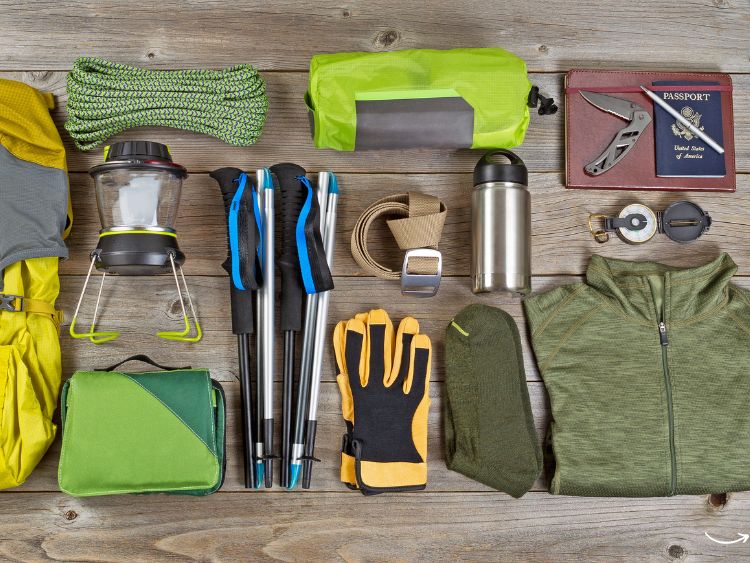Planning your next outdoor adventure? Whether you’re a seasoned hiker, an enthusiastic camper, or a weekend warrior, choosing the right gear can make or break your experience. With so many options available, making the best choice can be overwhelming. That’s where outdoor gear choice reviews come into play. But how do you sift through the noise and find the perfect gear? This guide will walk you through the essentials, helping you make informed decisions that lead to memorable and safe outdoor experiences.
Why Outdoor Gear Matters
When you’re out in nature, your gear is your lifeline. From the boots that keep your feet dry to the tent that shelters you from the elements, every piece of equipment plays a crucial role. Choosing the right gear isn’t just about comfort—it’s about safety and enjoyment.
Imagine trekking through a dense forest with a backpack that’s digging into your shoulders or trying to cook a meal with a stove that refuses to light. Not ideal, right? That’s why making informed decisions based on reliable outdoor gear choice reviews is essential.
Key Considerations for Choosing Outdoor Gear
When it comes to selecting outdoor gear, there are a few key factors to keep in mind:
- Durability: Will the gear stand up to the rigors of the outdoors?
- Weight: How much does it weigh, and how will it affect your mobility?
- Functionality: Does it serve the purpose you need it for?
- Price: Is it within your budget while still offering good value?
- Comfort: Does it fit well and feel good during extended use?
Each of these factors can significantly impact your overall experience, so it’s crucial to prioritize what’s most important for your specific needs.
The Top Outdoor Gear Categories
Now, let’s dive into the different categories of outdoor gear and what to look for in each.
1. Backpacks
Your backpack is more than just a bag—it’s your mobile basecamp. Whether you’re day hiking or embarking on a multi-day trek, your backpack needs to be comfortable, durable, and spacious enough to carry all your essentials.
What to look for:
- Capacity: Choose a size that fits your needs (e.g., 20-30 liters for day hikes, 60+ liters for multi-day trips).
- Fit: Look for adjustable straps and a comfortable hip belt to distribute weight evenly.
- Accessibility: Consider packs with multiple compartments and easy access points.
2. Footwear
Blisters and sore feet can ruin even the best-planned trip. Your choice of footwear should match the terrain you’ll be tackling.
What to look for:
- Support: Choose boots with good ankle support for rough terrain.
- Waterproofing: If you’re expecting wet conditions, waterproof boots are a must.
- Breathability: In hot weather, opt for breathable shoes to keep your feet cool and dry.
3. Tents
Your tent is your home away from home. It needs to be reliable, easy to set up, and suited to the conditions you’ll face.
What to look for:
- Seasonality: 3-season tents are suitable for spring, summer, and fall, while 4-season tents can handle winter conditions.
- Weight: If you’re backpacking, a lightweight tent is crucial.
- Space: Ensure there’s enough room for you and your gear, especially if you’ll be spending multiple nights.
4. Sleeping Bags
A good night’s sleep is essential for a successful trip, and that starts with the right sleeping bag.
What to look for:
- Temperature Rating: Choose a bag that’s rated for the lowest temperatures you’ll encounter.
- Insulation Type: Down insulation is warm and packable, while synthetic insulation performs better in wet conditions.
- Shape: Mummy bags are more efficient for warmth, while rectangular bags offer more room to move.
5. Cooking Gear
From simple stoves to full camp kitchens, your cooking gear can greatly enhance your outdoor dining experience.
What to look for:
- Fuel Type: Consider whether you prefer gas, liquid fuel, or wood-burning stoves.
- Portability: Choose lightweight, compact options if you’re backpacking.
- Ease of Use: Look for gear that’s easy to set up and clean.
6. Navigation Tools
Even with modern technology, traditional navigation tools like maps and compasses are invaluable.
What to look for:
- Accuracy: Make sure your compass is reliable and easy to read.
- Durability: Your tools should be able to withstand the elements.
- Redundancy: Carry both digital and analog tools to ensure you’re never lost.
Expert Tips for Reading Outdoor Gear Choice Reviews
So, you’ve decided to purchase some new gear. What now? Reading reviews is a great place to start, but not all reviews are created equal. Here’s how to get the most out of outdoor gear choice reviews:
- Check multiple sources: Don’t rely on just one review. Cross-reference several to get a well-rounded view.
- Look for detailed descriptions: Reviews that go into specifics about the gear’s performance in different conditions are more valuable.
- Consider the reviewer’s experience: A seasoned backpacker’s opinion will carry more weight than someone who’s new to the outdoors.
- Watch out for biases: Be aware of sponsored reviews that may not be entirely objective.
Common Mistakes to Avoid When Choosing Outdoor Gear
Even seasoned adventurers can make mistakes when selecting gear. Here are some pitfalls to avoid:
- Overpacking: Bringing too much gear can weigh you down and make your trip less enjoyable.
- Underestimating the weather: Always prepare for worse conditions than you expect.
- Choosing style over substance: Fancy-looking gear isn’t always the most functional.
- Ignoring the weight: Especially for backpackers, every ounce counts.
Frequently Asked Questions
- What’s the most important factor when choosing outdoor gear?
Comfort and functionality are equally important. If your gear is uncomfortable or doesn’t serve its purpose well, it can ruin your trip. - How often should I replace my outdoor gear?
It depends on how often you use it and the conditions it’s exposed to. Regularly check your gear for wear and tear, and replace items as needed. - Can I use the same gear for different seasons?
Some gear, like tents and sleeping bags, is season-specific. Make sure your gear matches the conditions you’ll face. - What’s the best way to break in new gear?
Use it on shorter trips or around your home before taking it on a big adventure. This helps you get used to the gear and identify any potential issues.
Conclusion
Choosing the right outdoor gear is a critical step in planning a successful adventure. By considering factors like durability, weight, and functionality, and by reading reliable outdoor gear choice reviews, you can make informed decisions that enhance your outdoor experiences. Remember, the best gear is the one that suits your needs and helps you stay safe, comfortable, and happy on the trail.
Authoritative Links
Here are some resources to help you dive deeper into outdoor gear:
These links will provide you with additional insights and help you stay up-to-date with the latest gear trends and reviews.






